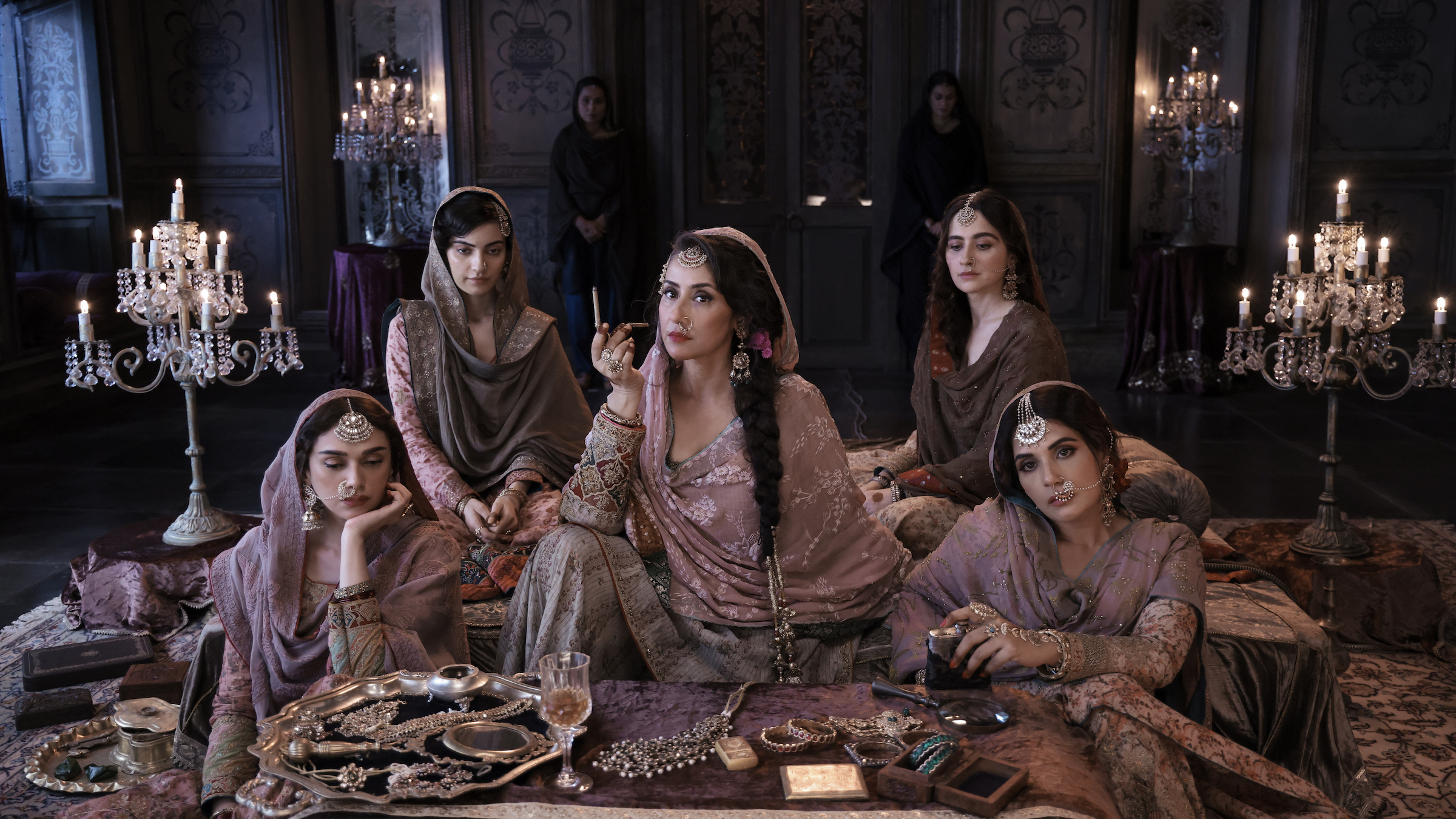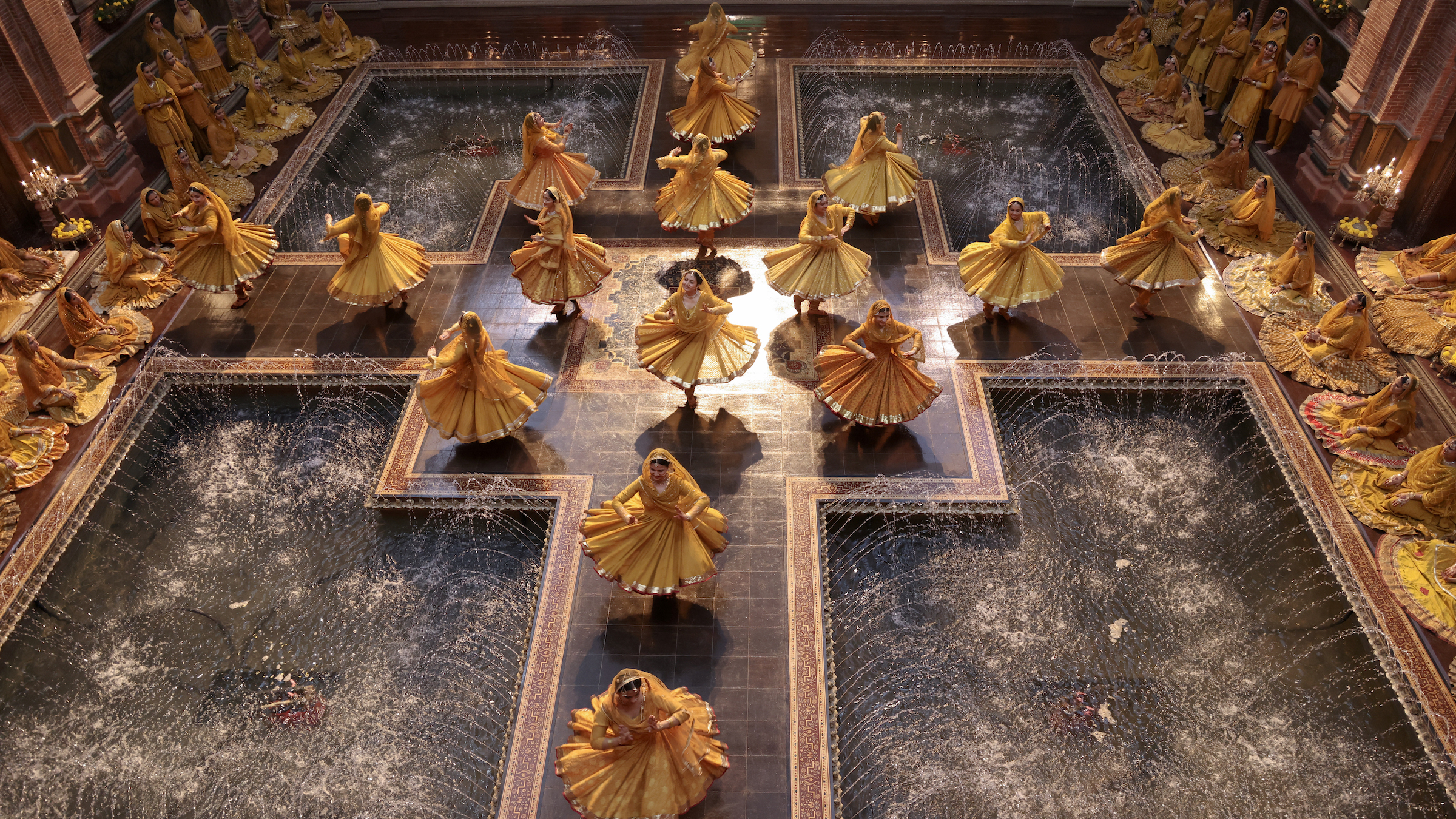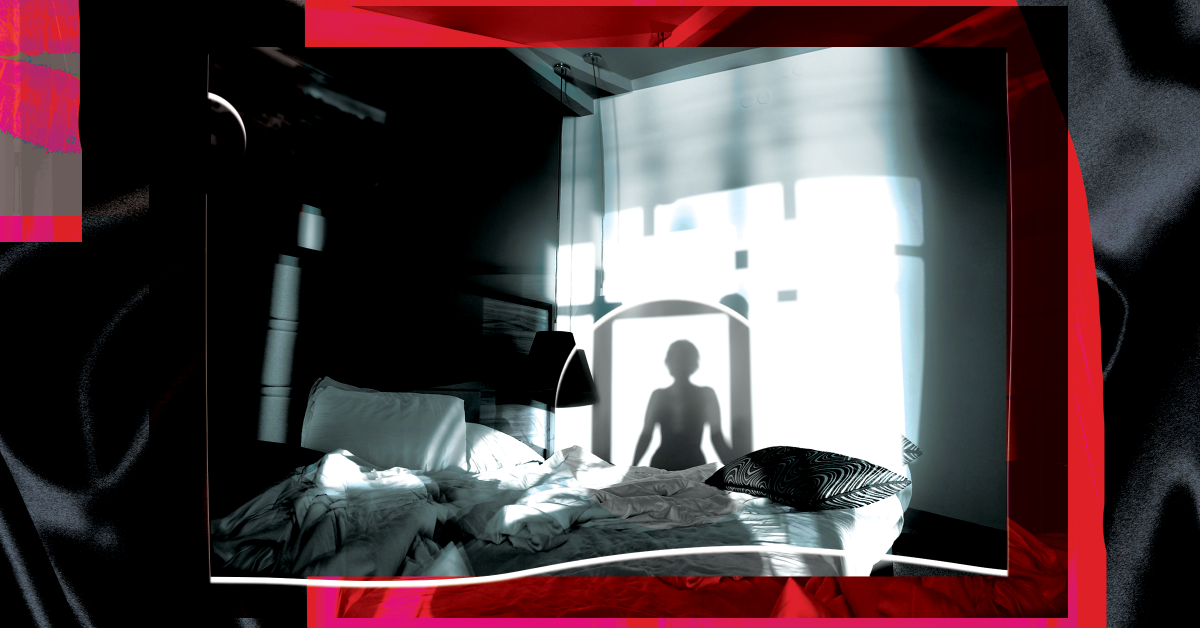
In the finale of Heeramandi: The Diamond Bazaar, Mallikajaan (Manisha Koirala), who reigns over the courtesans in the titular neighborhood in pre-Independence India, receives word that the British Army has arrested her daughter, Bibbojaan, for her rebellion in colluding with Indian freedom fighters. “All these years, we were just tawaifs [courtesans], but now we have become patriots of our homeland,” she says defiantly, tears welling up her eyes.
[time-brightcove not-tgx=”true”]The renowned Indian director Sanjay Leela Bhansali, who created and directed the widely anticipated Hindi-language series which premiered on Netflix on May 1, says he wanted to reimagine the world of the real-life courtesans of the walled city of Lahore, now situated in modern-day Pakistan. Bhansali calls them the “unsung heroes” in India’s struggle for independence from British colonial rule in the mid-1900s. “These women were always looked upon as entertainers and seen with their diamond necklaces, but their eyes have a story to tell,” he tells TIME.
A long-celebrated auteur of Indian cinema, Bhansali, 61, has brought grandeur and opulence to the medium for more than three decades with films like Devdas, which premiered at the 2002 Cannes Film Festival, and the more recent 2022 blockbuster Gangubai, which starred Alia Bhatt and took the audience into the world of Mumbai’s historic red light district. In many of his works, the female protagonists have the most integral roles, demanding attention and agency in their lives while laying bare their anxieties and imperfections. “I want to give dignity to women, which sometimes is taken for granted in our society,” says Bhansali.
Read more: How India Learned to Read Subtitles

Heeramandi similarly draws on these themes. Set in the 1920s, at the heart of the story is a biting rivalry between the powerful Mallikajaan and Fareedan (played by Sonakshi Sinha), the daughter of her old archnemesis, whom she strangled to death years ago. Fareedan returns to Heeramandi to avenge her mother, armed with a plan to dethrone the queen. Around them, the other courtesans—Mallikajaan’s daughters, siblings, and friends—grapple with their own hopes and desires for self-realization and freedom.
The concept was originally conceived by the Indian writer Moin Beg, who approached Bhansali about it nearly 20 years ago. But the director sat on the idea for a long time, waiting for the right opportunity to realize his vision.
Finally—and for the first time—the audience will see Bhansali repurpose his maximalist approach usually reserved for the big screen into an eight-episode series for Netflix. That’s a daunting task when considering his previous works have usually revolved around one, at most two, powerful female protagonists. In Heeramandi, there are six—all of whom Bhansali describes as the “queens of Lahore”—and that’s not counting the slate of supporting characters who make up the ensemble cast, each with their wit, flair, and a story to tell.
“It was a challenge to say, ‘How do I sustain myself for eight episodes?’” says Bhansali. “But I knew this was the best vehicle to do justice to the vastness of the subject and so many characters unfolding.”
With India becoming the world’s fastest-growing market for Netflix, the streamer has also heavily invested a larger share of its $17 billion budget this year in Indian content. For Bhansali, that meant a well-funded production that allowed him to recreate the world of the courtesans in intricate detail and at a scale larger than ever before, deploying 700 craftsmen over seven months to erect a sprawling set in Mumbai’s Film City. The director, known for executing his creative vision in an exacting and onerous manner, even flew down to Delhi to visit garment warehouses with the costume designer, individually picking out ornate fabrics to dress his characters. “Every moment is a labor of love of so many beautiful, talented people: the art directors, costume designers, the makeup artists, the people who created the paintings on the walls, the cobblestone roads, the lamps,” he says.

All of this meticulous costume and production design is to better serve Heeramandi’s glimpse into the historic and oft-misunderstood world of tawaifs, or courtesans, who became an integral part of Indian music, culture, and heritage during the Mughal era. The neighborhood of Heera Mandi, which still exists in Lahore, was once a thriving center for commerce, arts, and entertainment before it became a red-light district. During its peak, the courtesans were not only respected as disciplined artists in classical music and dance, but also as powerful players in elite Indian society for their refined taste, etiquette, and royal patronage. They followed a system of matrilineal inheritance by passing down their profession to their daughters and enjoyed the privileges of education and income that weren’t typically afforded to most women in Indian society. Like Japan’s geishas, their presence on special occasions was seen as a statement of class and wealth among the noble families of pre-independence India.
Heeramandi, drawing from tales of the courtesans passed down by historians, pays homage to their convictions in fighting for India’s freedom, as well as for their active contribution to India’s economy at the time. The character of Bibbojaan, the daughter of Mallikajaan, for example, echoes the spirit of Azizan Bai, a courtesan from the northern Indian city of Kanpur who donated to and supported the 1857 national uprising against the British East India Company. During anti-colonial revolts in the 19th century, many of the courtesans’ residences became hideout spots for Indian rebels.
“Even if the world doesn’t sing their song, they have played their part in history,” says Bhansali, “and they found freedom by the end of it,” referring to the choices they may have made in the years that followed India’s independence in 1947.
India’s changing social fabric—influenced first by the spread of Western education and Victorian morality during British rule, and later by Hindu reformist values of chastity—saw a decline in the courtesans’ status in society. As the patronage dwindled, the neighborhood began to transform into a red light district and the courtesans began to work in dance bars, which led to the conflation of courtesan and sex worker in the modern Indian imagination, according to Manish Gaekwad, author of The Last Courtesan: Writing My Mother’s Memoir. Some—like the famous Gauhar Jaan who became known as “India’s Melba”—had a more fortuitous next chapter and became celebrated artists, singers, and the first generation of Indian film stars.
The story told in Bhansali’s show ends before the lives of the courtesans evolved in these ways in modern Indian society. Nevertheless, he hopes that in Heeramandi, viewers see these women in all their dimensions, including their “sometimes wicked, sometimes charming” qualities, he says. And with Netflix’s massive reach, an international audience can savor the dazzling jewels and costumes of India, as well as connect with the shades of its history, society, and culture.
“We have seen these women for their singing and dancing, and yet, we have not seen them,” he says. But if Heeramandi accomplishes what he set out to do, “we will actually see them.”


























